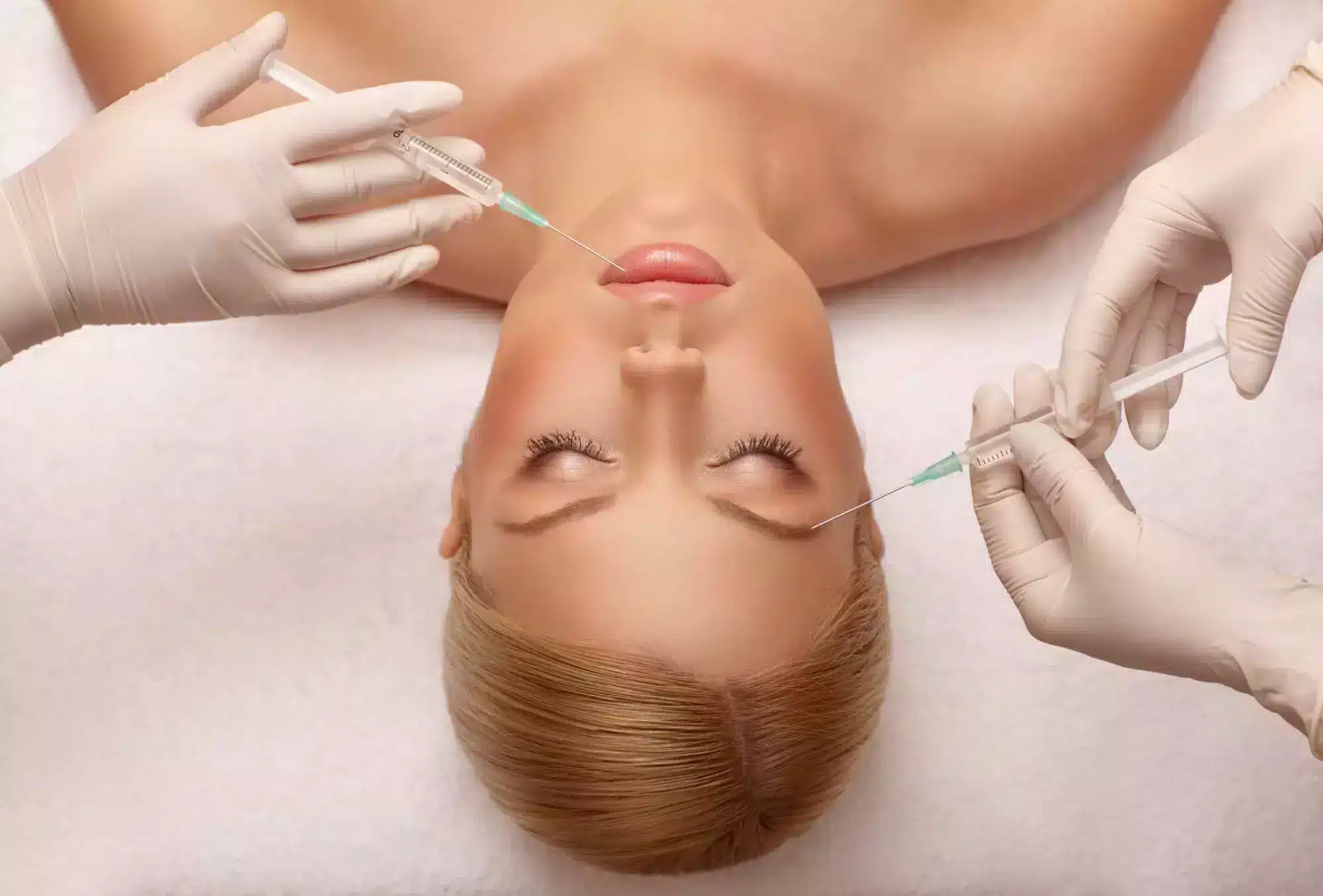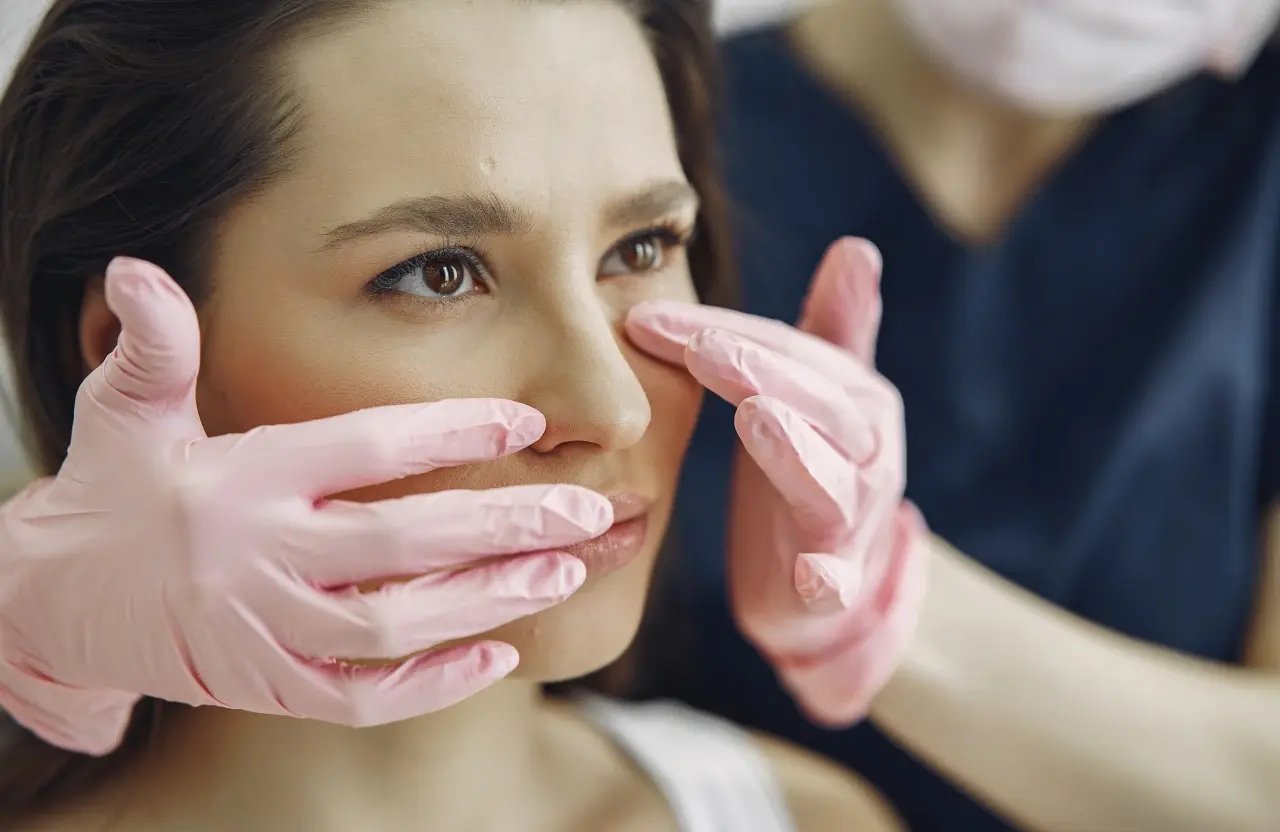Disclaimer: Facial fillers must only be injected by certified medical professionals to avoid unwanted complications and harm to the patient’s health.
Over just the last decade, dermal filler injections have turned into one of the most sought-after methods of restoring reduced volume in soft facial tissues, and for face rejuvenation. For the majority, fillers are safe; however, no one is permanently immune to the unwanted effects beauty procedures could create.
Reports of complications after fillers, including temporary or permanent vision loss, skin necrosis, or scar formation, regularly appear on the Internet and in the press.
Therefore, there is sufficient reason to discuss the danger zones for facial fillers’ introduction. Learn how to recognize warning signs that something went wrong, and take steps to prevent, mitigate, or eliminate any adverse outcomes. Let’s discuss how the introduction of dermal fillers affects the anatomical structure of the human face and the potential complications that may arise.
Complications That Can Occur When Treating Danger Zones for Dermal Filler Injections
All complications after filler application can be divided into three groups:
- – Mild: bruising, swelling, slight soreness, bloated feeling, etc.
- – Severe: vascular occlusion, vascular ischemia, hyperemia, which can lead to the appearance of ulcers, scars, and partial necrosis of the skin. They are characterized by the need to use resuscitation measures under the supervision of a specialist.
- – Critical: venous or arterial occlusion, which can lead to such irreversible consequences as necrosis, loss of vision, and stroke. Studies show that the number of such cases is only 0.05% of all procedures, but the price of risk is too high.
The most dangerous complication associated with the introduction of dermal fillers is venous or arterial occlusion, which can lead to ischemia and subsequent skin necrosis and vision loss. All these phenomena are highly undesirable and require immediate medical intervention. Arterial occlusion can lead to the formation of ulcers, scars, and occlusion of the eye artery – to loss of vision.
The causes of arterial or venous occlusion can be the introduction of the filler directly into the vein/artery, damage to the blood vessel, or external pressure on it, which is exerted by the injected filler or the formed edema. Occlusion of blood vessels and necrosis are considered rare complications.
The complexity of the cosmetologist’s work is that all work is performed blindly. Hence, the specialist’s knowledge of anatomy is vital.
Top 6 Filler Danger Zones
Here are six danger zones where fillers can be particularly risky:
1. Nose
The risk of irreversible vision loss when working with the nose is high due to the proximity of the blood vessels that feed the eyes. When working with the nose, the dangerous areas are an external nasal artery and an angular artery.
Most often, cosmetologists correct the hump of the nose. In this area, it is essential to exercise caution due to the dorsal nasal artery’s proximity and the ophthalmic artery’s direct branch.
2. Glabellar Lines
The area of the glabella – the longitudinal and transverse wrinkles between the eyebrows – is one of the most dangerous zones for dermal fillers due to the location of two critical arteries here, which connect with the ophthalmic artery that feeds the retina.
With inept correction, the result can be retinal artery blockage and blindness. When treating glabellar lines, the cosmetologist faces an additional challenge due to the small diameter of the vessels and the passage of the frontal and supraorbital arteries in this area.
3. The Temples
Correction of the cheekbones and temples is dangerous due to the location of the temporal artery, its posterior parietal, and its anterior parietal branches. The temple’s superficial temporal artery is also connected to the ophthalmic nerve.
When a needle or cannula is inserted deep into the bone, an experienced cosmetologist bypasses this artery; this requires a highly qualified and experienced doctor.
4, Periorbital Zone (Under the Eyes)
This area becomes increasingly risky the closer the cannula is advanced towards the nose and the dorsal nasal artery, which is also connected to the ophthalmic artery.
The filler is usually inserted in the medial part under the eyes and not the lateral (closer to the edge of the face). This part of the periorbital zone requires the cosmetologist’s skill to bypass the infraorbital artery.
5. Cheeks
The cheeks appear to be the most protected part of the face, but it is not so simple. There are potentially dangerous zones in the area, such as the facial, transverse arteries, the buccal branch of the maxillary artery, and the branch of the buccal artery.
Therefore, when doing contour plastic surgery of the nasolabial fold, the beautician should pay attention to the upper labial branch of the nasal artery.
6. Perioral Area
The most common area for a cosmetologist’s work requires the doctor to bypass the upper and lower labial arteries.
It is essential to understand that even innocent lip augmentation can end unexpectedly. A doctor should know where not to inject lip filler and monitor tissue discoloration and darkening (from gray to bluish shade). Worrying symptoms – ecchymosis, reticular erythema, and sharp pain at the injection site – are reasons to take immediate action.
Management of Complications in Danger Zones
A change in skin color immediately after filler injection indicates vascular ischemia. Symptoms of arterial or venous occlusion, which can lead to skin necrosis, are:
- – skin discoloration or darkening (to gray-blue shades),
- – ecchymosis,
- – reticular erythema,
- – severe pain at the injection site.
With vascular occlusion or impending necrosis, the main goal is stimulating blood flow in the affected area. A doctor can use the following methods:
- – Immediate application of a warm compress;
- – Massage of the affected area to expand blood vessels and disperse the injected drug;
- – Applying heparin ointment, which has an anticoagulant effect and promotes the dissolution of blood clots;
- – Giving the patient aspirin;
- – Using external medicines that stimulate the expansion of blood vessels;
- – Injection of hyaluronidase (in case of injection of hyaluronic acid fillers);
- – Injection of corticosteroids (anti-inflammatory/immunomodulatory), antibiotics, and taking antiviral drugs in case of threat of necrosis in the perioral area;
- – It is also possible to use hyperbaric oxygenation and laser procedures three months after the filler injection.
Cases of retinal artery occlusion are extremely rare and very dangerous. Symptoms of possible vision loss include sharp pain in the area of the affected eye immediately after filler injection, blurred vision, ptosis, headache, dizziness, nausea, and ophthalmoplegia.
Usually, in the case of retinal artery occlusion, vision loss is irreversible. Therefore, the best way to prevent this extremely undesirable phenomenon is to avoid danger zones for injectable fillers during the introduction, especially around the bridge of the nose, the forehead, and the upper part of the nasolabial folds.
Prevention of Complications in Dermal Filler Danger Zones
How to neutralize possible risks with contour plastic surgery?
It is recommended to follow the rules below to reduce the likelihood of unwanted consequences:
- First, cosmetologists must continuously improve their qualifications and knowledge of anatomy to know areas to avoid when injecting fillers.
- Inject filler in small doses;
- Do not apply anesthesia (including drugs containing adrenaline) near vascular bundles to not cause vascular spasms;
- Avoid the use of epinephrine to be able to identify the cause of skin discoloration quickly;
- Use a small-sized needle so that the filler enters the tissues in minimal doses;
- Use biodegradable fillers (for example, hyaluronidase stimulates the rapid breakdown of hyaluronic acid fillers);
- When inserting the filler, use the finger of the non-leading hand to cover the adjacent blood vessel;
- Inject filler into the upper and middle layers;
- Assess the level of morbidity of the procedure;
- Watch for possible changes in skin color;
- In the case of using non-biodegradable fillers, introduce them in small doses and take into account their high viscosity.
To prevent vascular occlusion, use a simple and effective technique – an aspiration test. After inserting the needle into the correction zone and before starting the administration of the drug, it is necessary to perform a slight reverse movement of the syringe piston. If there is no blood, you can begin administering the filler.
This test can prevent the drug from entering the vascular bed.
Conclusion
Complications can arise despite the safety of facial fillers, so doctors need to be familiar with the anatomy of the face to avoid any unwanted effects.
The filler danger zones we learned from this article are just some of the ones to be careful with. Human anatomy can differ from person to person, making it difficult to pinpoint exact locations with certainty.
While the focus of this discussion was on the arterial system of the face, understanding veins, nerves, and glands is equally crucial for ensuring patient safety.
To successfully inject dermal fillers, it is essential to have an in-depth understanding of facial anatomy and utilize safety techniques such as vessel mapping, aspiration, knowledge of injection depths, and knowing when to bolus and when not to.
FAQ
What happens if filler hits a nerve?
When too much filler is used, it can push the filler material into a foramen, which may compress a nerve and lead to paresthesia. This can often result in neurapraxia, but it’s possible for a nerve branch to be injured, causing localized anesthesia.
How long does it take to notice a vascular occlusion?
Although rare, cases have been reported where symptoms appear 12-24 hours after injection, but in almost all cases, symptoms occur immediately. Without prompt intervention to enhance vascular flow, the affected skin may develop a bluish tint and fine reticulations (lace-like pattern) that extend well beyond the injection site.
References
Unintentional Injection of Soft Tissue Filler into Blood Vessels in the Face: FDA Safety Communication. www.fda.gov/MedicalDevices/Safety/AlertsandNotices/ucm448255.htm.
Brennan C. Avoiding the “danger zones” when injecting dermal fillers and volume enhancers. Plast Surg Nurs 2014; 34:108.
Christopher C Surek, DO, High Yield Injection Targets and Danger Zones for Facial Filler Injection, Aesthetic Surgery Journal Open Forum, Volume 3, Issue 4, December 2021, ojab034, https://doi.org/10.1093/asjof/ojab034.
Pessa J, Rohrich R. Facial Topography: Clinical Anatomy of the Face. Quality Medical Publishing; 2012.
Surek CC. Facial anatomy for filler injection: the superficial musculoaponeurotic system (SMAS) is not just for facelifting. Clin Plast Surg. 2019;46(4):603-612. doi: 10.1016/j.cps.2019.06.007.
Wollina U, Goldman A. Facial vascular danger zones for filler injections. Dermatol Ther. 2020 Nov;33(6):e14285. doi: 10.1111/dth.14285. Epub 2020 Sep 18. PMID: 32902108.
Scheuer JF 3rd, Sieber DA, Pezeshk RA, Campbell CF, Gassman AA, Rohrich RJ. Anatomy of the Facial Danger Zones: Maximizing Safety during Soft-Tissue Filler Injections. Plast Reconstr Surg. 2017 Jan;139(1):50e-58e. doi: 10.1097/PRS.0000000000002913. PMID: 28027232.
Woodward J. Review of Periorbital and Upper Face: Pertinent Anatomy, Aging, Injection Techniques, Prevention, and Management of Complications of Facial Fillers. J Drugs Dermatol. 2016 Dec 1;15(12):1524-1531. PMID: 28095575.








